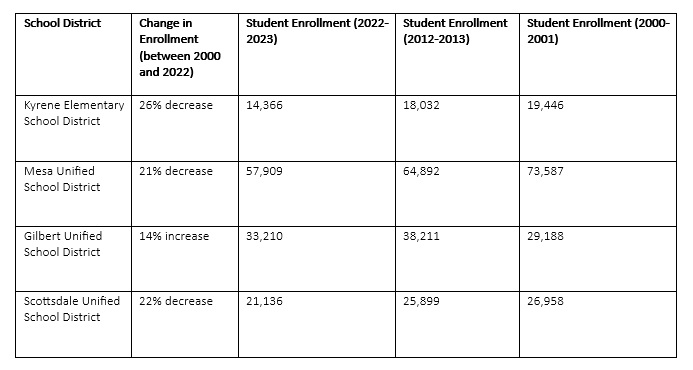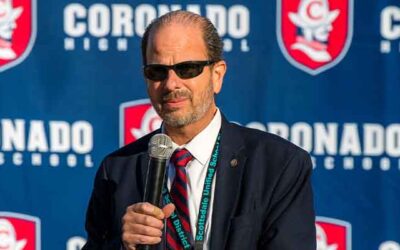By Arman Sidhu |
Amid the passage of historic school choice legislation in Arizona, the educational opportunities available to students and families today are unparalleled with the state’s universal ESA program. In addition to providing Arizona families with voice, choice, and agency in their child’s education, the ESA program has the potential to save Arizona taxpayers considerable funds from future school district bond and override measures.
However, to realize these savings, a long overdue conversation about rightsizing Arizona’s public schools is necessary. Despite significant population growth within Arizona, the enrollment forecasts for most school districts anticipate a period of long-term decline due to lower childbirths, affordability, and alternative options. This demonstrates a pressing need to review the budgets and assets of public school districts and align them with future enrollment projections.
Given the significant competition from the rise in homeschooling, as well as charter and private schools, public schools are no longer the only game in town. As a result, greater scrutiny from local taxpayers is needed in holding school districts fiscally accountable by questioning their need for additional funds through bonds and overrides.
What Are School Bonds & Overrides?
School bonds are loans that school districts sell to investors, who are repaid through the district’s future property taxes. These bond funds have specific limitations on their use and cannot be used to increase staff salaries. In most instances, these funds are leveraged for infrastructure projects involving the construction of new facilities or upgrades to existing ones. In contrast, overrides go directly to school districts and can be used for staff salaries and various programs outlined by the district requesting the override.
This November, a total of 23 school districts in Maricopa County will have bond and/or override measures on the ballot. Among these 23 districts, at least 4—Kyrene Elementary School District, Mesa Unified School District, Gilbert Unified School District, Scottsdale Unified School District—are in dire need of rightsizing before requesting additional funds from taxpayers based on their pronounced decline in enrollment.
In particular, Mesa USD, the state’s largest school district, enrolls fewer students today than it did in the fall of 1990. Yet, the district’s real estate portfolio somehow contains 78 schools, in addition to various non-instructional facilities and offices throughout the city. Mesa USD, as well as surrounding districts in similar positions, need to do right by taxpayers in exploring the sale of underutilized real estate before passing the buck to taxpayers.
As seen in the table below, only Gilbert USD has shown an increase in enrollment since the fall of 2000, and none of the districts can report an increase in enrollment in the last 10 years. Given the growth in ESA adoption and charter school enrollment, the pragmatic move is to respond to these declines now by rightsizing these districts, pursuing the sale of district assets, and removing administrative bloat.
Among the clearest signs of waste and inefficiency can be found in the amount of unspent federal pandemic relief funds provided to schools around the country. In the case of the 4 school districts requesting additional funds from taxpayers, they collectively still have access to tens of millions in unspent, flexible funds that are set to expire in a year.


What this experiment in “helicopter money” confirms is that the problem ailing local school districts is not a lack of funds, but rather their inability to direct funds efficiently. In the absence of a public monopoly, this decline in public school enrollment will continue to eat into taxpayers’ wallets with the additional forces of demographic shifts, affordability, and competition from the growing number of viable and efficient alternatives in the form of charter schools, private schools, microschools, and homeschool co-ops.
In adjusting to this historic era of school choice, the need for fiscal accountability remains essential on behalf of public school districts that have been reluctant to change and control their costs. To avoid perpetually funding buildings and bureaucracy, local taxpayers and residents must ensure their voices are heard.
Arman Sidhu is a lifelong Arizona resident and previously worked in K-12 education as a principal and teacher. He currently leads a nonprofit microschool.








